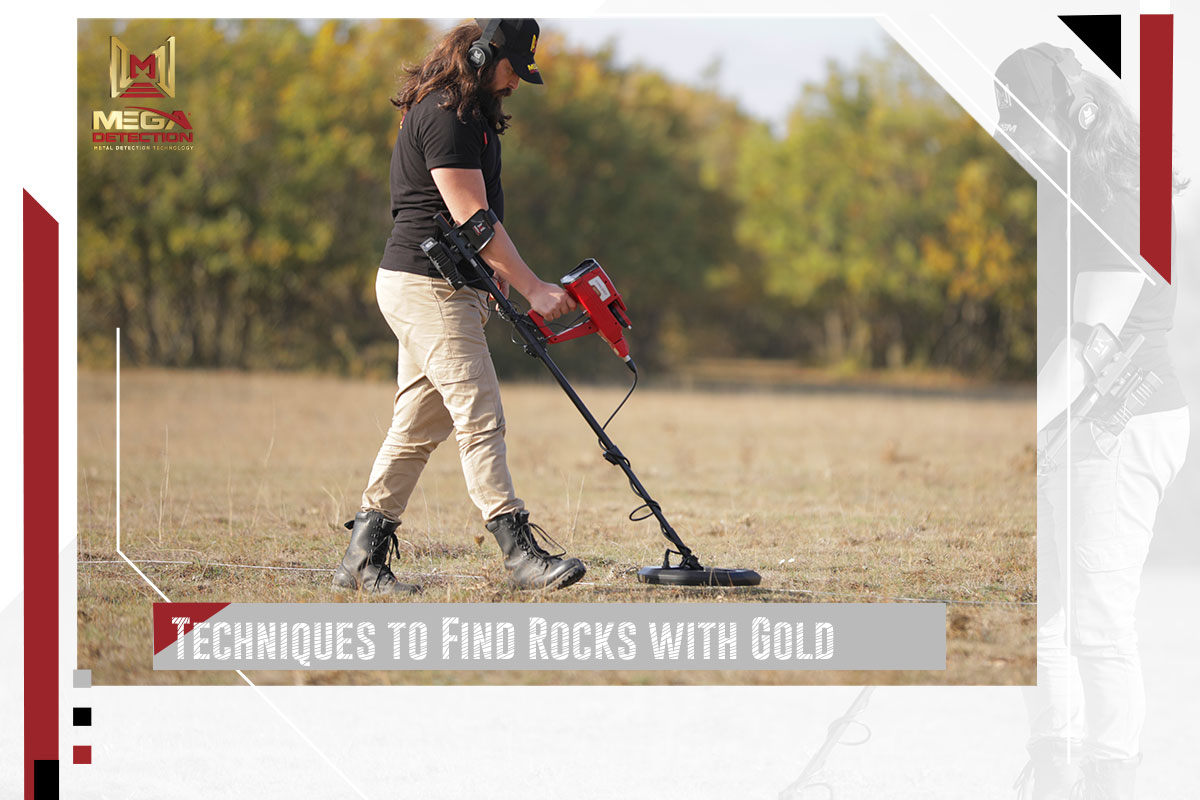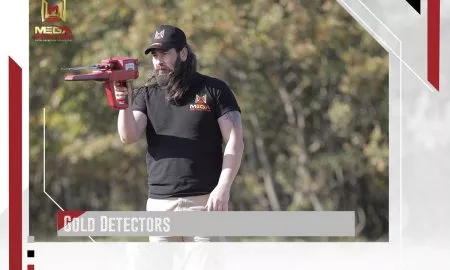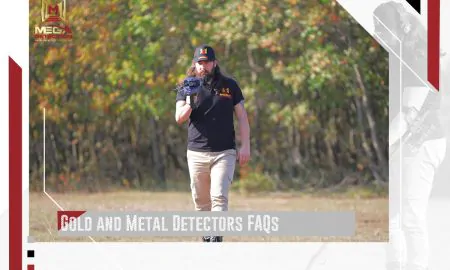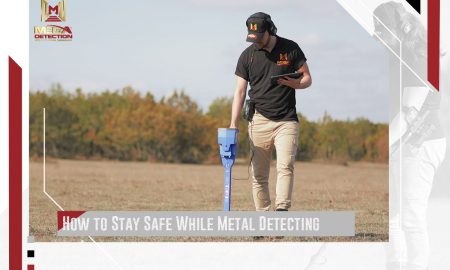Techniken Zum Finden Von Steinen mit Gold
Finde Steine mit Gold
For the average small-scale prospector, there are just a few methods that work well to locate gold in rock. First, I always recommend that you carry a gold pan and sample the gravels in the area. Even in a desert, you can dig down into a dry wash and pack in some water to use while panning. If you are able to locate even some very fine gold, this will tell you that you are in a good area.
Second, you can collect promising rock samples and crush them up to release any potential gold. It is a relatively simple method, and will give you an idea of what types of samples are worth collecting and processing.
Third, and perhaps the most popular method used by small-scale gold prospectors is to use a gold detector. By scanning mining tailings and ore samples with a metal detector, you can locate samples that contain visible veins of gold.
Keep in mind that not all gold is visible. In fact, some of the biggest mines in the world process gold that is not visible and therefore impossible to recover using the above methods.
For the average prospector looking for gold in rock, I would recommend doing you research and finding places that are likely to have large enough gold to recover.
Minerals often found with Gold
There are some well-known mineral that are commonly associated with gold. They are found in gold districts worldwide. Get familiar with the types of geology in the area that you are mining.
Similar Conditions to Nearby Mining Districts
If you are exploring new spots with little evidence of mining or prospecting in the past, then it is a good idea to first look at nearby gold areas and compare geology. Sometimes you can identify similar geological indicators that can help you find gold.
Can Metal Detectors Find Gold?
As far as gold-hunting detectors go, there are two types—very low frequency (VLF) and pulse induction (PI). VLF detectors designed to find gold, feature a higher operating frequency than other models in order to offer greater sensitivity to small gold nuggets. Realistically speaking, the chances of finding a pencil tip sized nugget is higher than uncovering a large one, which is why many gold hunters opt for a VLF detector. In this same frame of thinking, a small search coil will also provide increased sensitivity to small pieces of gold. However, these search coils won’t cover as much ground or search as deeply as larger coils.
Pulse induction (PI) detectors are a bit pricier because they provide newer technology for finding gold nuggets. They are built with advanced detection depth and high functionality in mineralized soil. Field tests support the claim that PI detectors can detect large nuggets at up to 2 feet or deeper. Many of these units are being designed to be more lightweight than previous iterations; many are also waterproof in shallow water. Avid gold hunters are moving toward PI units, although some say they use both varieties of gold detectors.
Detecting Tips
The basic tip for metal detecting is to go slow and stay low. This means that the speed that you sweep the coil across the ground should be slow, and the coil should pass across the ground in an even sweep that is as close to the ground as possible.
When detecting in gold fields, it is important to always be ground balanced. This involves the detector compensating for the natural, background mineralogy of the ground over which you are sweeping. Detectors that have automatic tracking will maintain an effective ground balance setting as you undertake your detection sweeps. However, detectors with manual ground balance should be checked regularly and readjusted when required to suit the terrain in which you are prospecting.
Übersehen Sie bei Ihrer Recherche nach Goldschürfgebieten keine alten Aufzeichnungen, Originalkarten und -vermessungen oder historische geologische Berichte und beschränken Sie Ihre Erkundung nicht auf bekannte Goldfelder. Kleine, subökonomische goldführende Erzfelder können für einen einzelnen Prospektor oft sehr produktiv sein, selbst wenn diese Standorte für große kommerzielle Explorationsunternehmen ungeeignet sind.
Darüber hinaus können die größeren Entdecker aufgrund der Wirtschaftlichkeit der groß angelegten Goldgewinnungsindustrie in reichere Mietskasernen umziehen, bevor das gesamte verfügbare Gold erschöpft ist. Diese Orte können dem einzelnen Prospektor hervorragende Gelegenheiten bieten, die Freude an der Suche zu erleben und gleichzeitig eine gute Gelegenheit zu haben, einige der „kostbaren Dinge“ zu lokalisieren.
Denken Sie immer daran, nur weil Sie in Ihren neuen Metalldetektor und andere Prospektionsausrüstung investiert haben, haben Sie nicht das Recht, auf Privatgrundstücke zu gehen. Sie müssen eine Genehmigung zur Prospektion in einer Reihe von Bereichen einholen. Wenn Sie beispielsweise Gold schürfen, müssen Sie möglicherweise eine Schürflizenz oder ein „Mines Right“ erwerben, bevor Sie Ihre Schürfexpedition beginnen. Wenn Sie auf Sportplätzen, Stadtparks oder anderen öffentlichen Einrichtungen suchen, benötigen Sie möglicherweise eine Genehmigung der Gemeindeverwaltung.
Die gute Nachricht ist jedoch, dass Prospektionslizenzen und andere Genehmigungen im Allgemeinen kostengünstig und einfach zu erhalten sind.
Wenn Sie eine Stelle finden, die Ihnen gute Ergebnisse liefert, verlangsamen Sie und suchen Sie gründlich, da es sicher mehr für den sorgfältigen Suchenden gibt. Und denken Sie daran, beim Einstellen der Diskriminationspegel an Ihrem Detektor diese so niedrig wie möglich zu halten. Es ist besser, gelegentlich ein Stück Müll auszugraben, als einen wichtigen Fund wie ein schönes Schmuckstück oder ein historisches Artefakt zu verpassen.
Ein letzter Tipp – amüsieren Sie sich; das ist das wichtigste. Sie werden nicht jedes Mal etwas Erstaunliches finden, wenn Sie auf Erkundungstour gehen, aber genau das macht diese besonderen Entdeckungen so besonders.












Schreibe einen Kommentar